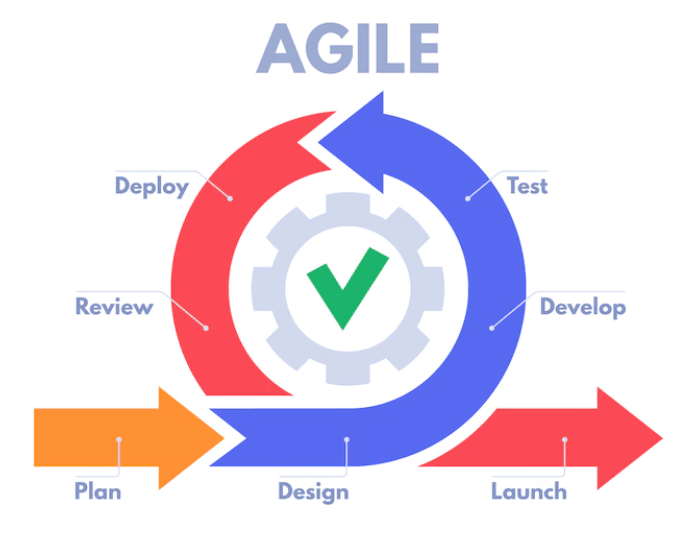Agile Methodology
Agile methodology is a set of principles, values, and practices for developing and delivering software solutions. It is on the idea of continuous improvement and collaboration between cross-functional teams. It encourages flexible responses to change and utilizes short development cycles, called sprints, which focus on specific goals. The agile methodology allows teams to adapt quickly to changing requirements and feedback. Agile aims to deliver working software quickly while providing a platform to adjust and improve the process with each iteration.
Advantages and Disadvantages of Agile Methodology
Advantages:
1. Adaptability: Agile allows teams to adapt to changes and shifts in project requirements quickly. It is especially beneficial for projects with rapidly changing conditions or requiring frequent customer feedback. Agile also allows teams to respond promptly to discoveries made during the project’s development.
2. Faster Delivery: Agile is to produce a working product version much faster than traditional methods. It allows customers to receive feedback sooner and the product to improve with each iteration.
3. Increased Quality: Agile promotes quality by allowing teams to build and test product components as they develop. It will enable teams to spot issues earlier in the process and fix them before they become a bigger problem.
4. Improved Collaboration: Agile encourages teams to work together and share ideas throughout the development process. It can lead to increased collaboration and improved customer and team communication.
5. Increased Visibility: Agile provides visibility into the project’s progress, allowing stakeholders to quickly identify issues and make decisions. It helps stakeholders make better-informed decisions that can lead to better project outcomes.
6. Cost Savings: Agile can help teams save money by reducing the rework required to fix issues. Groups can also reduce the project’s overall cost by avoiding costly delays using traditional methods.
7. Improved Morale: Agile can help improve team morale by allowing teams to take ownership of their work and have greater autonomy. It can lead to enhanced motivation and engagement from the group.
Disadvantages
1. Shortcomings Caused by Frequent Changes: In Agile methodology, frequent changes are allowed, which can lead to a few shortcomings. These may include the possibility of introducing errors while making the changes, the need to re-test the entire changed system, and the case of delay in the completion of the project.
2. Poor Documentation: Agile methodology is known to focus little on documentation. It can lead to issues in the future when the product needs to be maintained or modified.
3. Poor Estimation: Agile methodology is on the idea of delivering small increments of the product. It can lead to issues in estimating the total time needed to complete the entire project.
4. Difficulty in Planning: Agile methodology is iterative and incremental development. It means that the planning for the project is on a small scale, and it can be difficult when the project’s scope is enormous.
5. Lack of Visibility: The agile methodology needs to provide more visibility to the stakeholders about the project’s progress. It can lead to issues in measuring the team’s performance and taking corrective measures.
6. Lack of Standardization: The agile methodology does not follow any standard process. It can lead to confusion among the team members and stakeholders.
7. Difficult to Manage: Agile methodology, in a dynamic environment, can be challenging to manage. It makes it difficult for the project manager to manage the team and ensure the project completes on time.
8. Difficulty Implementing Quality Assurance: Quality assurance is an essential part of any project. However, the Agile methodology has a different quality assurance process, making it challenging to ensure the quality of the delivered product.
Final Thoughts – Advantages and Disadvantages of Agile Methodology
Agile methodology effectively manages projects, particularly those that are highly complex or involve multiple teams working together. The agile method encourages collaboration, frequent feedback, and rapid iteration to develop a quality product quickly. It also allows teams to focus on delivering the highest priority features first instead of spending time on non-essential tasks. Agile methodology can help couples to stay on track, prioritize tasks, and reduce the risk of getting stuck in a development cycle. An agile methodology is an excellent tool for teams looking to develop great products more efficiently and effectively.

